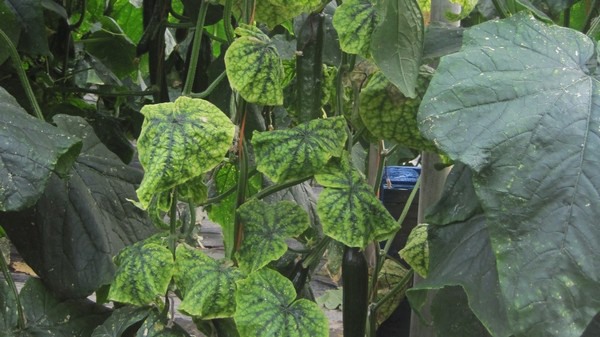The ‘New Delhi’ virus has been a serious problem for many cucurbit growers, especially in the Mediterranean region, for numerous years. Due to its high infection pressure and rapid spread, this disease poses a severe threat to cucumber crops. Rijk Zwaan is proud to introduce a solution for cucumber growers: ‘Delhi Defense’.
The Rijk Zwaan cucumber varieties with ‘Delhi Defense’ show good resistance against the Tomato Leaf Curl New Delhi virus (ToLCNDV), which is better known as the ‘New Delhi’ virus. Although the symptoms in cucumber are relatively mild compared to other crops, the virus still causes a lot of damage and can result in lower productivity, severe patchy yellowing and moderate leaf curling in the apical leaves. The broad range of host plants that are susceptible to the ‘New Delhi’ virus in combination with dispersal by whitefly (Bemisia tabaci) makes this virus such a threat to cucumbers.


Optimal protection combining ‘Delhi Defense’ and ‘Blueleaf’
Trials in greenhouses with high infection levels of the ‘New Delhi’ virus have demonstrated that the resistant varieties stay healthier, whereas the susceptible varieties in the same greenhouse show both clear infection and production loss. Firstly, fewer infections occur in ‘Delhi Defense’ cucumber varieties and secondly, if infection does occur, the symptoms and effects of the disease are limited. The ‘Delhi Defense’ varieties are part of Rijk Zwaan’s ‘Blueleaf’ line of varieties that have stronger natural resistances against diseases and pests. This combination offers the best of both worlds, enabling high-yielding crops as well as high-quality fruits.
